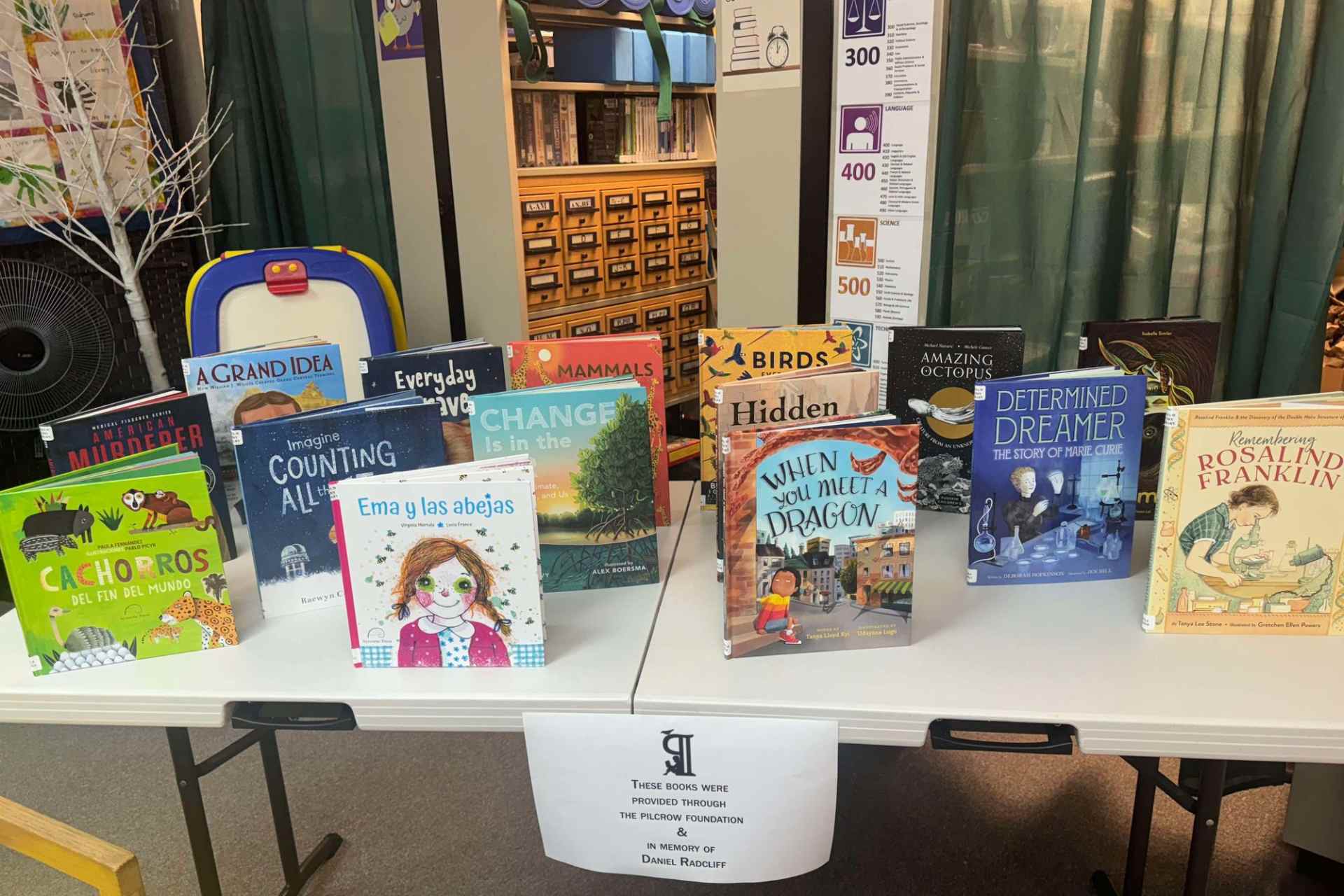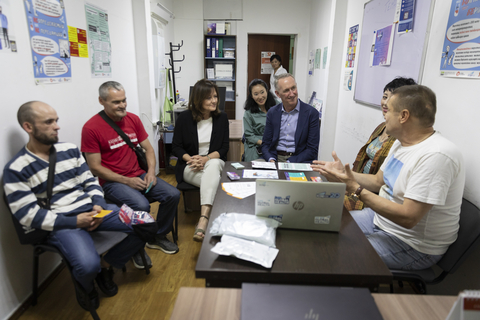In the wake of Cambodia’s turbulent history, two men – Darin Wyman and James Purthree – along with their two dogs, Bully and Toto, have dedicated themselves to bringing clean water to people in need. Their organization, Well of Life Projects Cambodia (WOLPC), has brought clean drinking water to some of the country’s most vulnerable communities.
James’ story begins in 1979 when he came to Thailand as a refugee after the war. He grew up near the Cambodian border and experienced the struggle of displaced families first hand. Driven by a desire to help, he pursued higher education in Chiang Mai, Thailand and obtained both his bachelor’s and master’s degrees in theology.
He returned to Cambodia in 2005 and worked with missionaries from Hong Kong to assist factory workers before returning to Thailand for further studies in 2008. It was during this time that he met Darin in 2010, a meeting that would mark the beginning of her life-changing mission.
Darin, a musician and former cruise director, felt called to help the people of Cambodia and realized that working with a local like James was essential.
James’ deep understanding of local culture and language made him an invaluable asset and together they launched their first project in 2011 – a Christmas party in Prek Toul village in Stung Meanchey commune, Meanchey district – the garbage dump of Phnom Penh’s old town.
Darin says: “I would rather be up to my neck in garbage and help people in need than be a cruise director on a ship and serve disgusting, ungrateful people.”
Changing lives, one water system at a time
Their first initiative was to feed 6,000 people at a Christmas party. This event almost ended in violence when security forces opposed their efforts. Despite the challenges, the project was a success and opened their eyes to the severe water crisis in the region.
The conditions in Stung Meanchey were catastrophic. Thousands of people lived among mountains of garbage and without access to clean water.

Above: The horrific conditions at the Stung Meanchey dump before. BELOW: Within 48 hours of the system being commissioned, villagers begin building houses to live closer to the water supply. WOLPC
“When we come to a place, we try to find out what the community needs. They needed a lot! But especially water. Many people had health problems and many children were suffering from diarrhea because they didn’t have clean water. I contacted the community leaders there in the slum. There were also some NGOs in the area, so I asked them how we could help,” says James. The post.
“They said, ‘We don’t have this project, we don’t have the money for it.’ They just pointed to the money. So we prayed how we could help these people.
“At the time, we wanted to drill a well somewhere because the city’s water supply was too far away for the community, but the groundwater was obviously toxic – it was under a landfill,” he adds.
Darin says: “The water there was grey. No matter how deep you drilled – even 200 metres. It was still one of the most polluted bodies of water on the planet. It is not economical to treat it.”
The solution was to pipe water from Phnom Penh and purify it with carbon filters. Scott Neeson of the Cambodian Children’s Fund (CCF) provided crucial support by acquiring land for their station and providing access to a free water supply. Thanks to this joint effort, they were able to make their plan a reality.
“We didn’t have access to water testing in Cambodia, so we learned how to make better water. To do that, we added extra carbon filters at the end of the filtration system, which made the water sweeter. Now it’s easier to drink and people drink more of it. People have said to us, ‘Oh, I like the taste of your water!'” says Darin.
After the purification process, it is stored in huge 1500-litre tanks for community use.
“In fact, I got my drinking water from there for the first two years,” he adds.
“Without Neeson’s help, the project would not have been feasible due to the costs and bureaucracy. And he provided us with a place where we could build our distribution center for the community,” emphasizes Darin, thanking Neeson warmly.
When asked how they raised the funds to purchase the system components – PVC, concrete, filter components, etc. – Darin says they spent about $6,000 on the project, most of which came from donations from people in Canada and America, as well as a small Korean church in Houston, Texas.
Expanding your reach
Encouraged by its success in Stung Meanchey, in 2017 WOLPC turned its attention to Ang Dong village in Krang Thnong commune, Sen Sok district, Phnom Penh. The area, a makeshift village for those relocated from Diamond Island, was home to nearly 30,000 people at its peak.
Each family had an area of about five by five meters. The need for clean water was critical.

ABOVE: Conditions so far in Ang Dong, a temporary village in Krang Thnong commune in Phnom Penh’s Sen Sok district for those displaced from Diamond Island. Below: Well of Life is building a filtration system to provide drinking water to Ang Dong residents. WOLPC
“Today there are only about 20,000 left, back then there were 30,000. When they got there, they had absolutely no water. So we decided that would be our next project,” says Darin.
“We had to build a facility to house the distribution point,” he recalls. “The situation was very serious. Many children were sick.”
Here too, they had a contact with another NGO, Bong Mai of Stellar Child Care Organization (SCCO). Mai was the person who informed the team that his organization had moved from Stung Meanchey to Ang Dong and asked if WOLPC was still in the business of helping people by building water supply systems. He asked them to come by themselves and see how they could help.
“The situation was very serious. Many people, especially children, were sick and had diarrhea. They were very far from Phnom Penh, about 12 km. (Mai) took me there and introduced me to the people and village leaders and told me about their work. Mai said they needed water, but his NGO had no such program,” says James.
Since he and Darin had the expertise, they took over the project, started fundraising, and worked with SCCO, which had all the necessary connections with the government, agencies, and police in the community so they could proceed.
The nearly $9,000 project provided the entire community with clean water and dramatically improved living conditions.

Residents of Ang Dong village enjoy fresh, clean drinking water. WOLPC
Funny thing: One time, a man they were working with asked his congregation in Canada to bring their bottles to the church as part of the fundraiser. Within two weeks, they collected $1,200 worth of beer bottles.
It mentions an interesting fact: Japan’s water treatment center, the Phnom Penh Water Supply Authority (PPWSA), is at the highest point in Phnom Penh. From there, it’s all downhill to the airport grounds, meaning they don’t need pumps to transport the water, saving the normally huge engineering costs.
“When you see the water coming out of the main line, it’s amazing, it comes out like a pressure washer, it’s fantastic,” says Darin.
Sen Sok Primary School
In 2018, WOLPC started another project at Sen Sok Primary School.
“They had water, but it was not drinkable. Students had to bring it from home, which also led to more plastic consumption. An NGO had previously built a filtration system for them, but it was broken and there was no money to repair it,” says James.

James Purthree (centre right) and Bong Mai (centre left) discuss their plans for a new water treatment system with Sen Sok community leaders. WOLPC
Their idea was to build a centre where people could get drinking water, as it was a slum. They agreed with the headmaster to provide clean water to the school, but in return they were given free land to build a public water tap as part of the system for the families of the students and the residents of the neighbourhood.
However, during the Covid-19 pandemic, many parts of the system were stolen.
“They couldn’t steal the tanks, but everything that wasn’t bolted down was taken. They stole the cables, the pump… Thieves even dug up the pipes,” says Darin.
WOLPC had paid for the school’s water supply for two years. After vandalism during the pandemic, the system was rebuilt in 2021. After reconstruction, the school took responsibility for the water bills.
There are about 300 families living in the area, all of whom now have access to free, clean water. The school serves about 2,500 students and about 1,500 residents also get their water from the outstation.
The team emphasizes with obvious pride that all three systems are still in operation today and provide tens of thousands of people with clean water.

The water system of Sen Sok Primary School. Outside the school premises, water taps are also available for the residents of the community to use free of charge. WOLPC
A look into the future
According to the duo, there are countless options for water system No. 4.
“You could throw a dart at the map,” says Darin, but he may be mentioning the provinces of Battambang or Kampong Speu; they are just waiting to raise the necessary funds.
They are also working with Marie Ens, a well-known and loved figure in Cambodia, to build an orphanage and are exploring partnerships with health care providers to build a hospital.
That’s where Marie met in 2011. She came to Cambodia in 1957 and has more than 50 years of experience in establishing orphanages. There are currently five of them in operation in the country.
“We can build it, but Marie knows how to run it and staff it, and that’s the hardest part,” Darin says.
For the hospital, the group plans to partner with Dr. Mark Ambrose from Chicago, USA. He runs an impact investment hospital in Cambodia that provides free treatment to people who cannot afford treatment. They will turn to him if they need help with staffing and running the operation.
“Our goal is to help the people of Cambodia,” says James. “If we sit down and discuss with someone and we have the same goals, the same dream… then just do it!”

Darin Wyman poses for a photo with a young Stung Meanchey resident who now has access to healthy, clean water. WOLPC

Toto (left), a British bulldog, and Bully, an American Staffordshire Terrier, are proud members of the Well of Life Projects Cambodia crew. Inset: Students from Sen Sok Primary School play with Bully, one of the well-behaved members of the team. WOLPC




